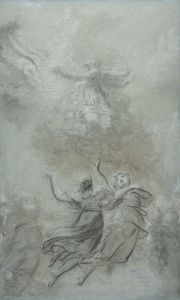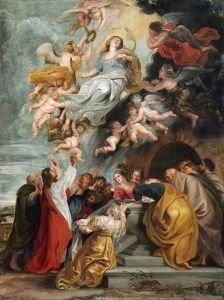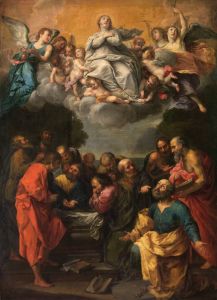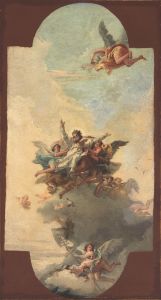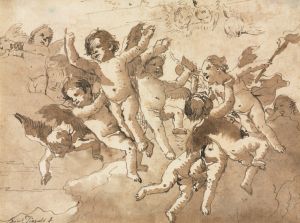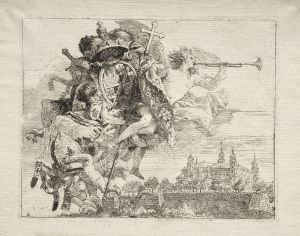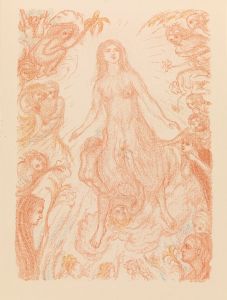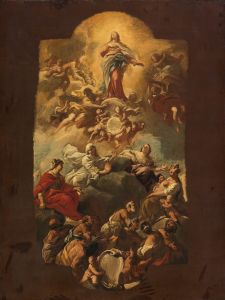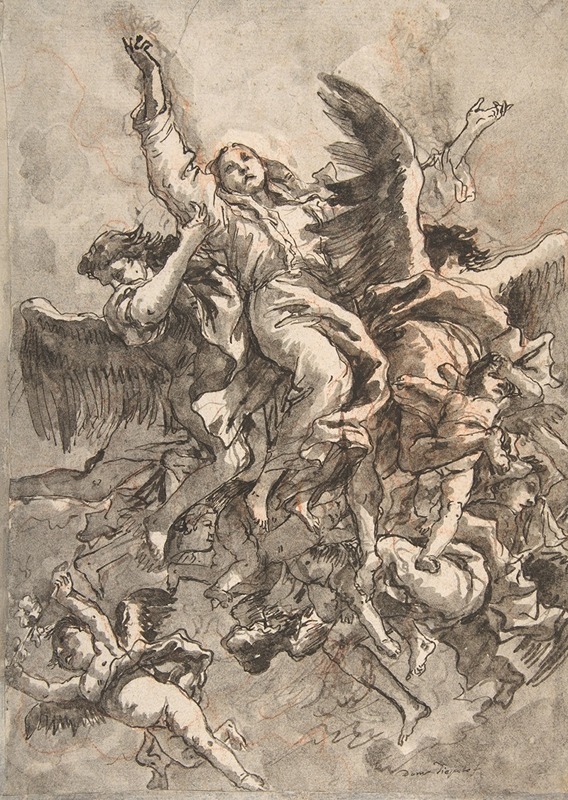
The Assumption of the Virgin
A hand-painted replica of Giovanni Domenico Tiepolo’s masterpiece The Assumption of the Virgin, meticulously crafted by professional artists to capture the true essence of the original. Each piece is created with museum-quality canvas and rare mineral pigments, carefully painted by experienced artists with delicate brushstrokes and rich, layered colors to perfectly recreate the texture of the original artwork. Unlike machine-printed reproductions, this hand-painted version brings the painting to life, infused with the artist’s emotions and skill in every stroke. Whether for personal collection or home decoration, it instantly elevates the artistic atmosphere of any space.
Giovanni Domenico Tiepolo's The Assumption of the Virgin is a significant work by the Venetian artist, who was the son of the renowned painter Giovanni Battista Tiepolo. Domenico Tiepolo (1727–1804) was an accomplished artist in his own right, known for his religious compositions, genre scenes, and frescoes. This painting depicts the Assumption of the Virgin Mary, a central theme in Christian art that celebrates the belief in Mary's bodily ascent into heaven.
The artwork portrays the Virgin Mary being lifted into the heavens, surrounded by angels and divine light. The composition reflects Domenico Tiepolo's mastery of dynamic movement and dramatic use of color, hallmarks of the Venetian Rococo style. The figures are arranged in a swirling, upward motion, emphasizing the spiritual elevation of the Virgin. The celestial atmosphere is enhanced by the interplay of light and shadow, a technique Domenico inherited and adapted from his father’s artistic approach.
While Domenico Tiepolo is often overshadowed by his father, his works demonstrate a distinct style that combines the grandeur of the Baroque with a more intimate and personal sensibility. The Assumption of the Virgin exemplifies his ability to convey both the majesty and the humanity of religious subjects. The painting likely served as an altarpiece or devotional artwork, intended to inspire faith and devotion among its viewers.
The exact date of the painting's creation is not definitively documented, but it is consistent with Domenico Tiepolo's mature period, during which he produced numerous religious works. The location of the painting, whether in a church, private collection, or museum, is not specified in available records. Similarly, details about its commission or patronage remain unclear.
Domenico Tiepolo's religious paintings, including The Assumption of the Virgin, reflect the broader artistic trends of 18th-century Venice, where the Rococo style flourished. His works are characterized by their vibrant colors, fluid compositions, and a sense of theatricality, all of which are evident in this depiction of the Virgin's Assumption.
This painting stands as a testament to Domenico Tiepolo's skill as a painter and his ability to interpret traditional religious themes with originality and emotional depth. It remains an important example of Venetian religious art from the late Baroque and Rococo periods.






